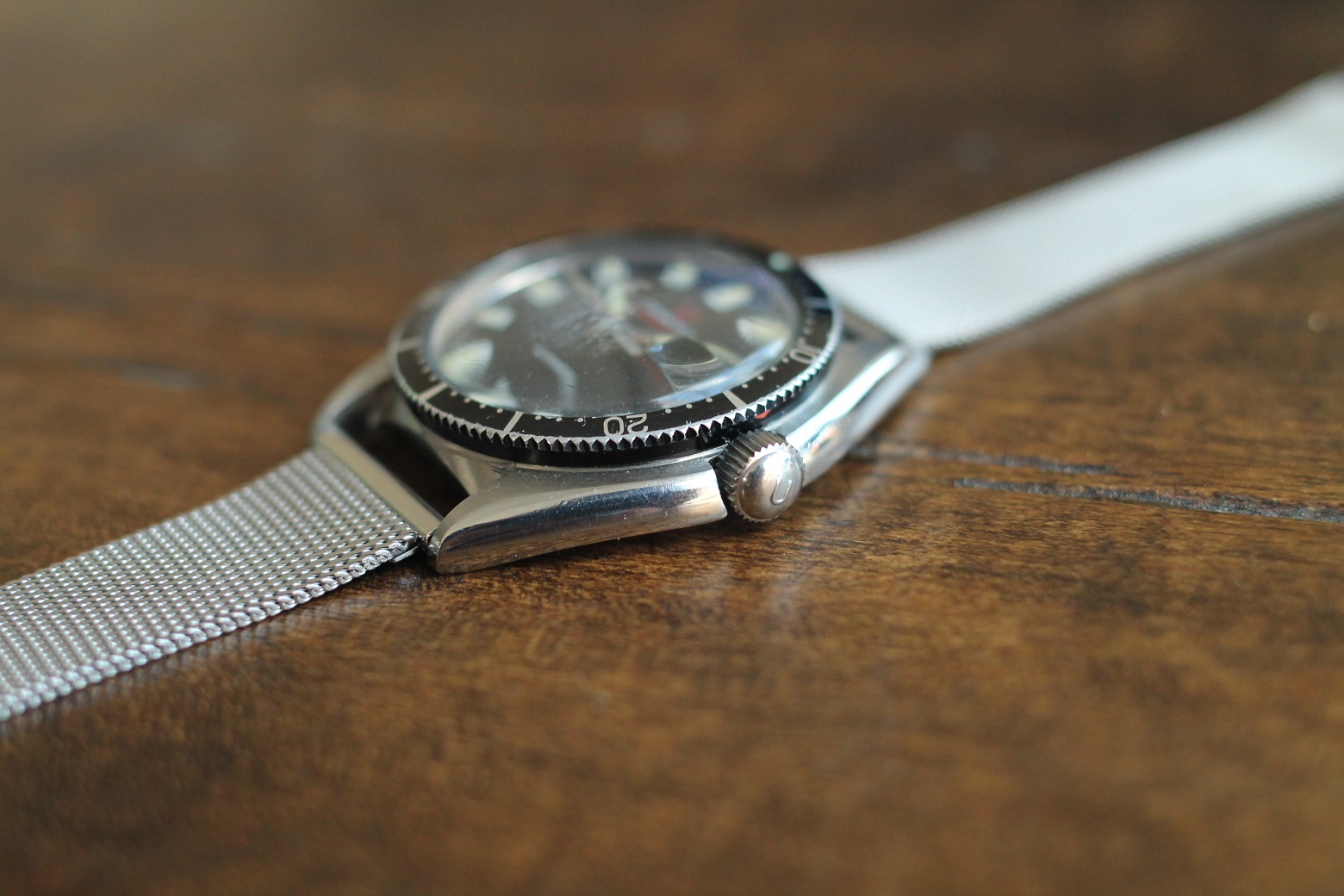This awesome dive watch from Universal Geneve came into my collection courtesy of Bring A Loupe, a weekly feature on Hodinkee that highlights cool (usually vintage) watches that are on the market. I didn’t know I wanted one until I saw the picture in the article, but as soon as I saw it, I scrambled to contact the seller as fast as possible. I didn’t know much about Polerouters before I bought this one, but the more I researched, the more I became fascinated by them.
Universal Geneve had created an in-house automatic movement utilizing a micro rotor (or “Microtor”) for their Polerouter line, which was designed by Gerald Genta and had become a classic dress watch for many years. In the 1960’s, they expanded the line to dive watches, originally beginning with the super compressor Polerouter Subs that are highly sought after today. The asymmetrical cases were the final Polerouter Subs that were produced, and utilized the I-69 movement, which allowed the case to have a much slimmer profile than other dive watches of the era. They were also produced in a variety of formats, with some watches looking like the example here, some looking like my “art deco” example, and some using differing handsets and lume layouts on those same two dials.
If you’re looking for a 1960’s dive watch that is still legitimately undervalued, I think the Polerouter Subs present a strong argument. The looks are unique, the movement is beautiful and actually in-house, and examples in good condition are extremely rare (seriously – I’d estimate that only 5-10 correct and desirable examples of the asymmetrical Polerouter Subs surface each year).
The Nitty Gritty
This Polerouter Sub exhibits absolutely fantastic patina – all matching and perfectly aged to a nice creamy hue. The case is still sharp, and the bezel looks great with a closely-matched pearl insert. The crystal has crazing, but there’s a reason I haven’t replaced it – these Polerouter Subs included special crystals due to the shape of the date window, which was trapezoidal in shape. Additionally, the “cyclops” magnifier actually rest on the inside of the crystal, which is something that I haven’t seen used anywhere else. The result is a flat surface on top the crystal, but a truly unique look straight-on.




